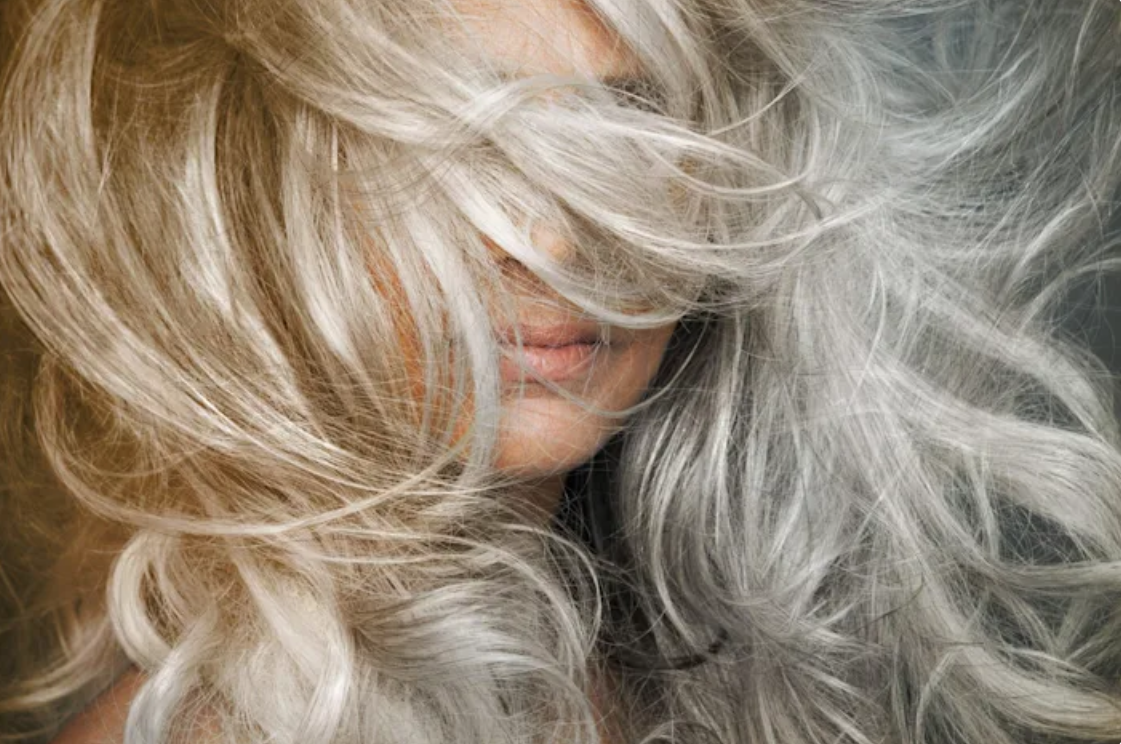Want to ask a beauty editor for advice? Or get beauty product recommendations from someone who has tried them all? You’ve come to the right place. In our weekly series, beauty editor Hanna Hong answers your most important skincare, hair care and makeup questions, all submitted by Real Simple readers. Tune in every Tuesday and submit your own hot beauty questions here for a chance to be featured.
Reader Question:What’s the best way to gradually get whiter? Mary Fouladi
As more and more women choose to dye their hair gray, silver hair is becoming sexier and sexier. The problem with embracing gray hair, however, is that it doesn’t just appear overnight. It starts out as one or two hairs with missing pigment, or worse, the dreaded parting line (that is, a specific part of your head that only has gray hair), which makes it harder to adjust to the natural growth process.
First, let’s clear up a common myth about how gray hair works. Hair doesn’t actually “turn gray” – once the hair follicle produces hair, the color is fixed. This means that a hair will never change color unless you dye it. However, since our hair follicles naturally produce less and less color as we age, they can turn gray (you should never pluck them, by the way).
In other words, growing out gray hair is a process, and it doesn’t happen quickly. While you can choose to dye the rest of your hair gray, this can also present a host of problems. “Over time, your silver hair manifests earlier and faster because the color of the foot and highlights don’t follow or look as vibrant as before,” says Lorraine Macy, creator of the Curly Girl Method, owner of Spiral, founder of CurlyWorld’s Curly Girl: The Handbook and Silver Hair: The Handbook. “This means you have to color your hair more often, which starts to become an exhausting (and unsustainable) drain on time and money that never ends with healthy hair.” Remember, unhealthy hair tends to age you more than the color itself.”
But there is another option, and that is to let your hair go gray naturally. To make this transition a little easier, in addition to some helpful tips, here’s what the process of converting to gray hair needs to do
Use hair fading cream.
When your hair first starts to turn gray, you may start to notice the line where the color stops and the gray begins. says Massey: “Often this initial line of demarcation bothers people – what I call ‘avoiding the root ‘” “When you start to see gray light, it’s like the phases of the moon. The first phase is like a crescent moon and looks like a landing strip.” In the initial growth process, the goal is camouflage.
Hair Toppik Building Fibers (starting at $8; Toppik.com) can be mixed with existing strands to create an evenly colored look (plus, it can help prevent thinning hair!) There’s also a DIY option: “I recommend finding an eye shadow color that matches your shade and mixing it with your favorite non-silicone hairspray. You can use it to temporarily cover the parting line while your hair is damp,” says Macy. “Get creative-you can wear a wrap-around bandana, scarf, large handkerchief and hat, or weave bobby pins at the roots to temporarily hide the parting line and add volume to help conceal it.”
Avoid impulsive coloring choices with strategic lowlights instead.
The next stage is the waxed crescent part where the gray is more pronounced, but still less than half of the hair. At this moment, you may be more tempted than ever to dye it all out, but hang in there! Marcy says: “Please avoid touching the new growth with permanent color – it will catch the silver hair unevenly and set you back, creating a vicious cycle of another color.” This is my biggest regret, and the biggest regret of many other women. Those who dye their hair an intermediate color deeply regret it because it just prolongs the inevitable and makes the hair and color look even worse.”
Instead, opt for semi-permanent lowlights because they’re less damaging-that will deposit color (which lasts about 30 times) rather than stripping your hair. In addition to being less maintenance, the darker base color will blend with your natural gray, allowing for a smoother transition. If you’re looking for something transitional, try salt and pepper haircuts, where the combination of black and gray looks naturally shiny with some traces of white.
Trim your hair often.
The next step is to let your hair grow out. Macy says: “Once you cut it far enough, you can cut the rest of the color with a pixie cut and transition that way.” Remember, the length you want (e.g., pixie vs. bob) will change how quickly you transition to gray. Think about the look you want and ask your stylist for an appropriate cut schedule so you’re not overwhelmed by the schedule. If you want to speed up the process, remember to trim your hair regularly, especially if your hair is previously colored and already dry and damaged.
Eliminate unnecessary tones.
Once you’ve successfully broken the highlight/shear cycle, you’ll want to keep the gray in your mane. As with any platinum color or any cool shade, you may find that sun exposure causes your hair to oxidize and turn brassy over time. For starters, Massey recommends avoiding products that contain sulfates and silicones. “Sulfates can dry out the hair cuticle and silicones can stick to the hair and make silver hair look more yellow.”
To counteract brassiness, cycle through a balancing product or toner once a week. “My favorite product is CurlyWorld with or without Hue ($48; curlsonly.com). In the transition phase, when you have two opposing colors on your head – newly grown silver hair and dyed old hair – it helps because it helps moderate the conflicting tones,” says Macy.


